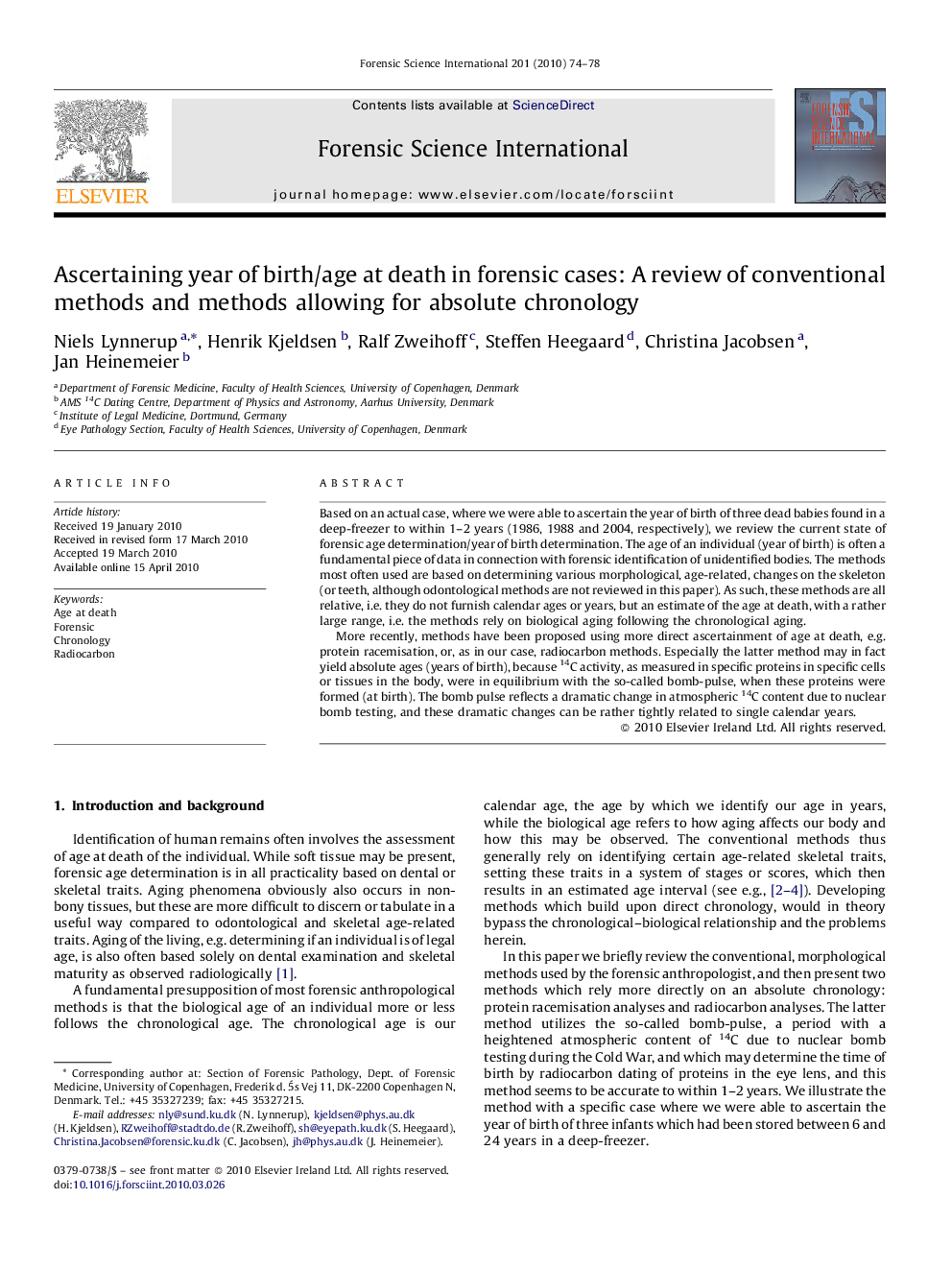| Article ID | Journal | Published Year | Pages | File Type |
|---|---|---|---|---|
| 96939 | Forensic Science International | 2010 | 5 Pages |
Based on an actual case, where we were able to ascertain the year of birth of three dead babies found in a deep-freezer to within 1–2 years (1986, 1988 and 2004, respectively), we review the current state of forensic age determination/year of birth determination. The age of an individual (year of birth) is often a fundamental piece of data in connection with forensic identification of unidentified bodies. The methods most often used are based on determining various morphological, age-related, changes on the skeleton (or teeth, although odontological methods are not reviewed in this paper). As such, these methods are all relative, i.e. they do not furnish calendar ages or years, but an estimate of the age at death, with a rather large range, i.e. the methods rely on biological aging following the chronological aging.More recently, methods have been proposed using more direct ascertainment of age at death, e.g. protein racemisation, or, as in our case, radiocarbon methods. Especially the latter method may in fact yield absolute ages (years of birth), because 14C activity, as measured in specific proteins in specific cells or tissues in the body, were in equilibrium with the so-called bomb-pulse, when these proteins were formed (at birth). The bomb pulse reflects a dramatic change in atmospheric 14C content due to nuclear bomb testing, and these dramatic changes can be rather tightly related to single calendar years.
